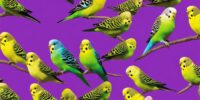When to Consider a Parrot's Native Habitat in Your Care Plan
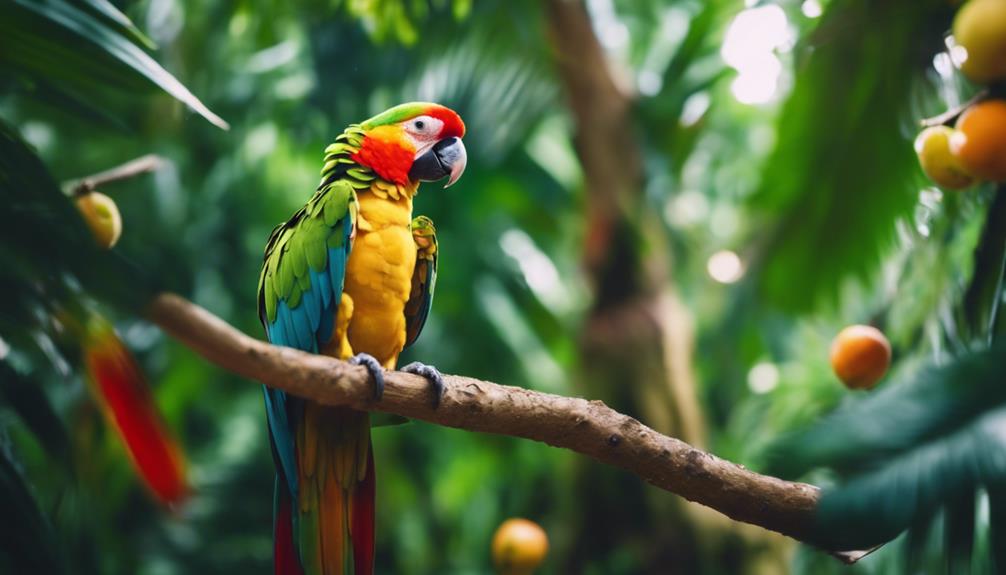
When creating a care plan for a parrot, it is crucial to consider its native habitat. Parrots are typically found in tropical and subtropical regions, where they have access to a variety of plants, fruits, and seeds. Mimicking this environment in captivity can help promote the bird's physical and mental well-being. Providing a diverse diet that includes fresh fruits, vegetables, nuts, and seeds is essential. Additionally, offering plenty of opportunities for exercise, social interaction, and mental stimulation will help keep the parrot healthy and happy. It is also important to create a safe and secure living space that allows the bird to exhibit natural behaviors, such as flying, climbing, and foraging. By taking the time to understand and replicate a parrot's native habitat, you can create an environment that promotes the bird's overall well-being and quality of life.
Importance of Native Habitat Understanding
Understanding a parrot's native habitat is crucial for providing optimal care and ensuring its well-being in captivity. Habitat adaptation plays a significant role in a parrot's welfare implications. Different species of parrots have specific considerations based on their natural habitats. Environmental factors such as temperature, humidity, vegetation, and social structures are essential to mimic in captivity to ensure the well-being of the bird.
For example, a parrot species native to tropical rainforests will have different needs compared to a species from arid regions. The humidity levels, temperature fluctuations, and availability of different types of vegetation all play a role in the bird's overall health and happiness. By understanding the natural habitat of a parrot species, caretakers can create an environment that supports the bird's physical and psychological needs, ultimately enhancing its quality of life in captivity. It's crucial to consider these factors when designing a care plan for parrots to ensure they thrive in captivity.
Dietary Considerations and Natural Foraging
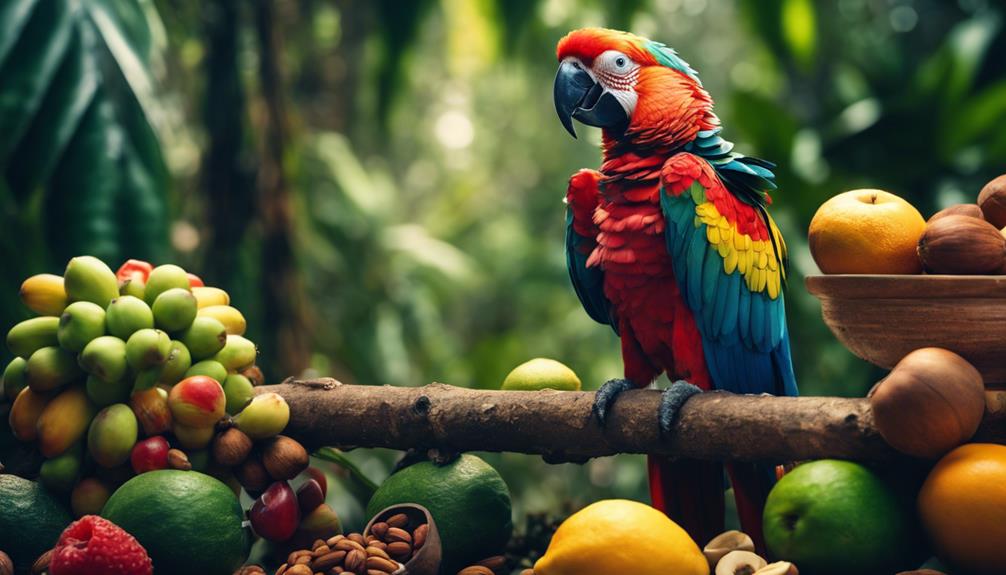
Parrots exhibit a diverse diet in their natural habitats, consuming a variety of fruits, seeds, nuts, and vegetation.
Understanding their foraging needs is crucial for replicating their natural feeding behaviors in captivity.
Providing opportunities for natural foraging can help stimulate mental and physical well-being in pet parrots.
Diet Variety Foraging Needs
Considering the dietary needs and natural foraging behaviors of parrots is crucial for providing optimal care in captivity. Diet enrichment plays a significant role in meeting these needs, offering a variety of foods to mimic the diversity found in their natural habitats.
Providing a mix of fruits, vegetables, nuts, seeds, and pellets not only ensures proper nutrition but also encourages foraging behaviors. Parrots have evolved to spend a significant portion of their day foraging for food, a behavior that provides mental and physical stimulation.
Natural Feeding Behaviors
Natural feeding behaviors in parrots encompass a diverse range of dietary considerations and instinctual foraging tendencies that reflect their evolutionary adaptations. When considering a parrot's natural feeding behaviors, it's crucial to understand the following:
- Dietary Diversity: Parrots in the wild consume a variety of foods such as fruits, nuts, seeds, and vegetation to meet their nutritional needs.
- Foraging Instincts: Parrots exhibit natural foraging behaviors, which can be stimulated through enrichment activities like puzzle feeders or hiding treats.
- Natural Preening: Feeding time is often intertwined with natural preening behaviors, as parrots groom themselves and their flock members during and after meals.
- Social Interactions: Mealtime is a social event for parrots, emphasizing the importance of communal feeding and bonding within a group.
Behavioral Insights From Wild Environments
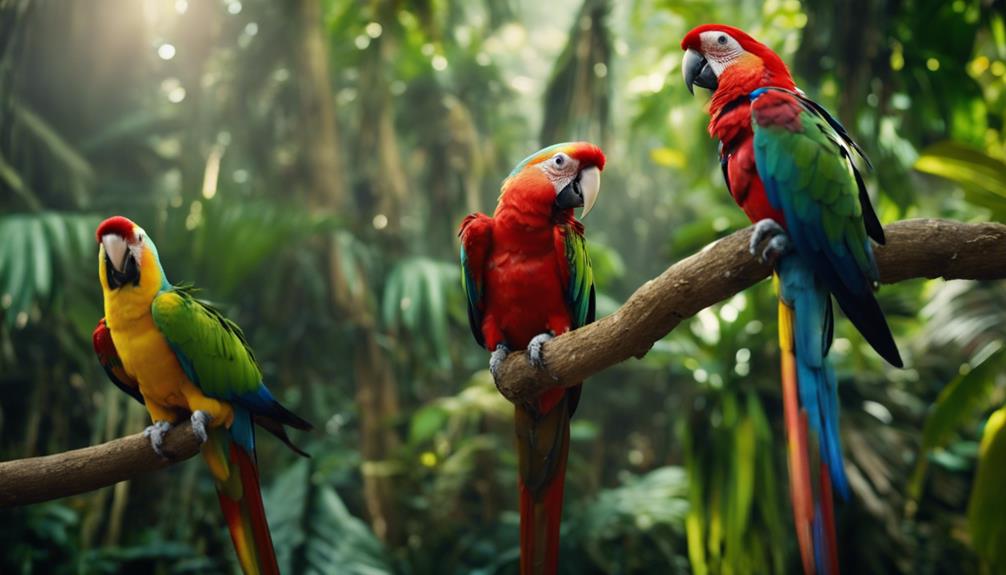
Studying parrots in their native habitats provides valuable insights into their behavioral patterns and social interactions. Observations in the wild reveal fascinating aspects of parrot behavior, shedding light on nesting behaviors, social interactions, predation risks, and survival strategies. By understanding how parrots behave in their natural environments, caretakers can better cater to their needs in captivity. Here are some key insights gained from studying parrots in the wild:
| Behavioral Aspect | Description | Importance in Care |
|---|---|---|
| Nesting Behaviors | Parrots exhibit diverse nesting behaviors, from tree cavities to ground nests. | Providing appropriate nesting materials and structures can enhance well-being. |
| Social Interactions | Parrots are highly social birds, often forming strong bonds with mates and flock members. | Encouraging socialization through interactive toys and group activities is beneficial. |
| Predation Risks | Parrots face threats from predators such as snakes, raptors, and mammals. | Creating a safe and secure environment can reduce stress and promote a sense of security. |
| Survival Strategies | Parrots have developed various strategies to survive in their habitats, including flocking. | Mimicking natural foraging and flocking behaviors can stimulate mental and physical health. |
Health Implications of Native Climate
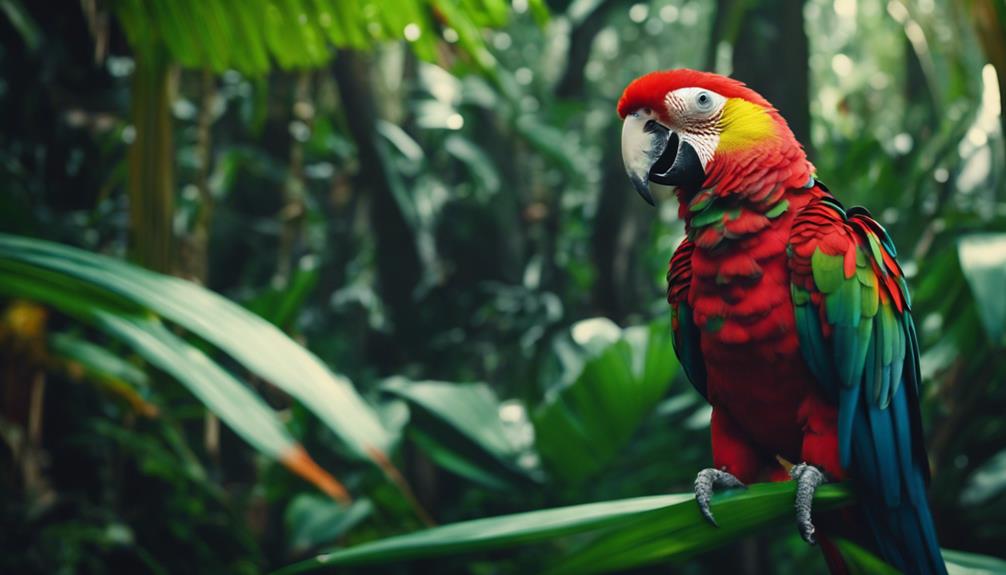
Observations of parrots in their natural habitats reveal crucial insights into how the native climate impacts their health and well-being. Parrots have evolved over time to adapt to specific climate conditions, which has significant implications for their overall health. Understanding these adaptations can help provide better care for pet parrots.
- Temperature Regulation: Parrots from tropical climates have developed efficient ways to regulate their body temperature. Mimicking these conditions in captivity can help prevent health issues related to extreme temperatures.
- Humidity Requirements: Native habitats often have specific humidity levels that parrots are accustomed to. Maintaining optimal humidity in their environment can support respiratory health and prevent dryness of the skin and feathers.
- Dietary Needs: Climate influences the availability of food sources in a parrot's natural habitat. Providing a diet that aligns with their native environment can contribute to their overall health and well-being.
- Behavioral Patterns: Climate adaptation has shaped parrots' behavioral patterns. Understanding these patterns can help create a stimulating environment that promotes their mental and physical health.
Environmental Enrichment Strategies
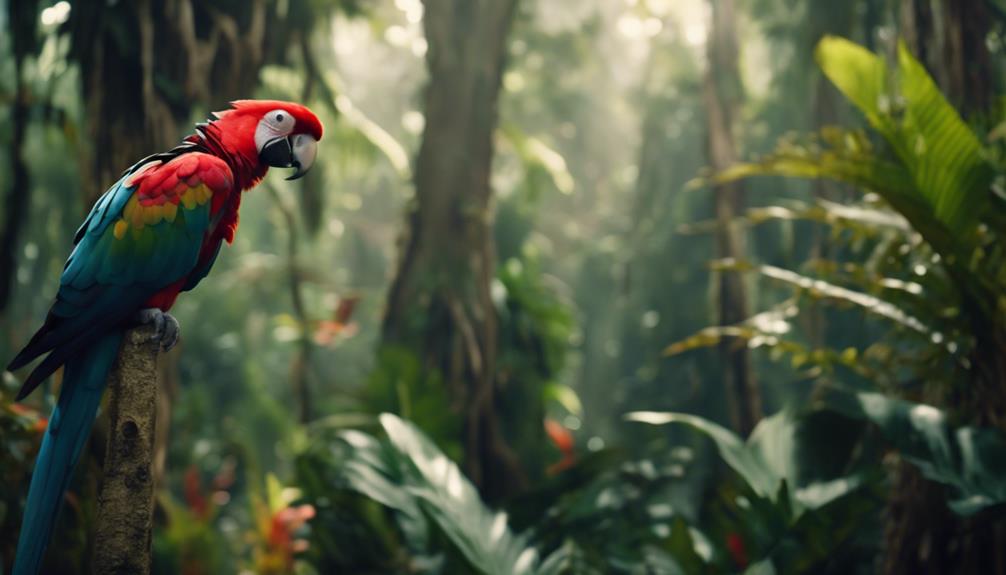
Understanding the impact of environmental enrichment strategies on captive parrots' behavioral well-being is crucial for promoting their overall health and quality of life. Enrichment activities play a significant role in providing cognitive stimulation to parrots, keeping them engaged and preventing boredom. Social interactions are essential for parrots as they are highly social creatures in the wild. Encouraging play behavior through various toys and activities can mimic the natural behaviors they would exhibit in their native habitats.
| Enrichment Activities | Examples |
|---|---|
| Foraging opportunities | Food puzzles, hidden treats |
| Environmental variety | Rotating toys, different perches |
| Training sessions | Teaching tricks, target training |
Implementing a variety of enrichment activities tailored to the specific needs of the parrot species can enhance their well-being and mental stimulation. It is crucial to observe their responses and adjust the enrichment strategies accordingly to ensure a fulfilling and enriching environment for captive parrots.
Replicating Natural Roosting Conditions
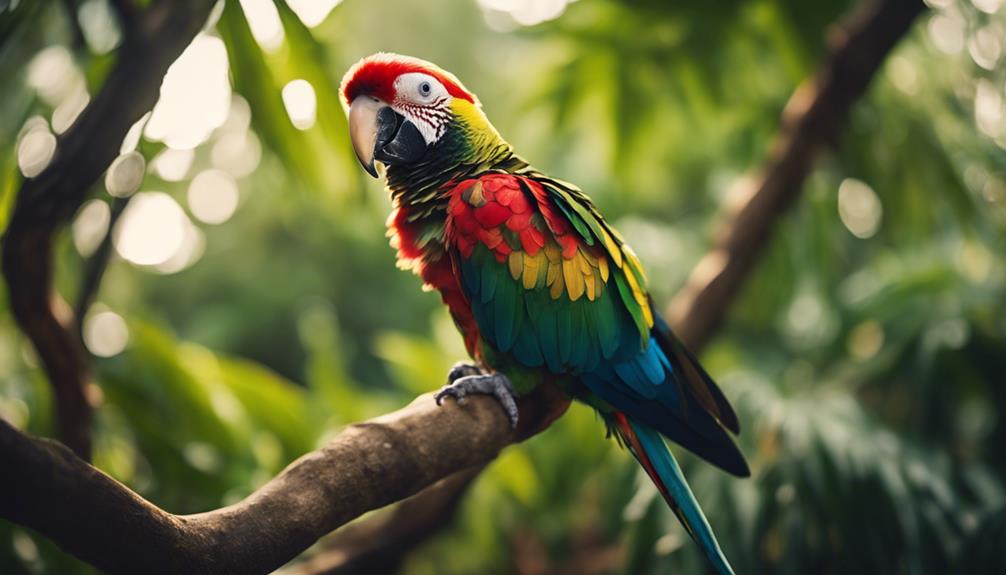
Parrots exhibit a range of roosting behaviors in the wild based on their species and habitat. Understanding the types of roosting perches preferred by specific parrot species is crucial for providing them with a comfortable and natural roosting environment.
Additionally, replicating day-night cycles through controlled lighting can help regulate their natural circadian rhythms and promote better rest and overall well-being.
Roosting Perch Types
To replicate the natural roosting conditions of parrots, providing a variety of perch types is essential for their physical and mental well-being. Parrots exhibit specific roosting behavior and perch selection based on their natural habitat. Understanding their roosting habits and sleeping patterns can help in choosing suitable perch types to mimic their natural environment effectively.
Here are some key perch types to consider:
- Branch Perches: Mimic the natural tree branches where wild parrots roost.
- Rope Perches: Offer flexibility and help exercise their feet muscles.
- Flat Perches: Provide a stable surface for resting and sleeping.
- Thick Perches: Mimic the feeling of larger branches for a comfortable roosting experience.
Mimicking Day-Night Cycles
Implementing a consistent day-night cycle in a parrot's environment is crucial for replicating natural roosting conditions and supporting their overall well-being. Parrots, like many birds, rely on light cycles to regulate their circadian rhythms, influencing their sleep patterns and overall health.
Mimicking the gradual changes of natural light through the use of timers for artificial lighting can help create a sense of normalcy for the parrot. Providing them with a consistent routine aids in reducing stress and anxiety, promoting better sleep quality. Enrichment activities during the day can encourage mental stimulation, while ensuring a dark and quiet environment at night is essential for restful sleep.
Conservation Efforts and Awareness
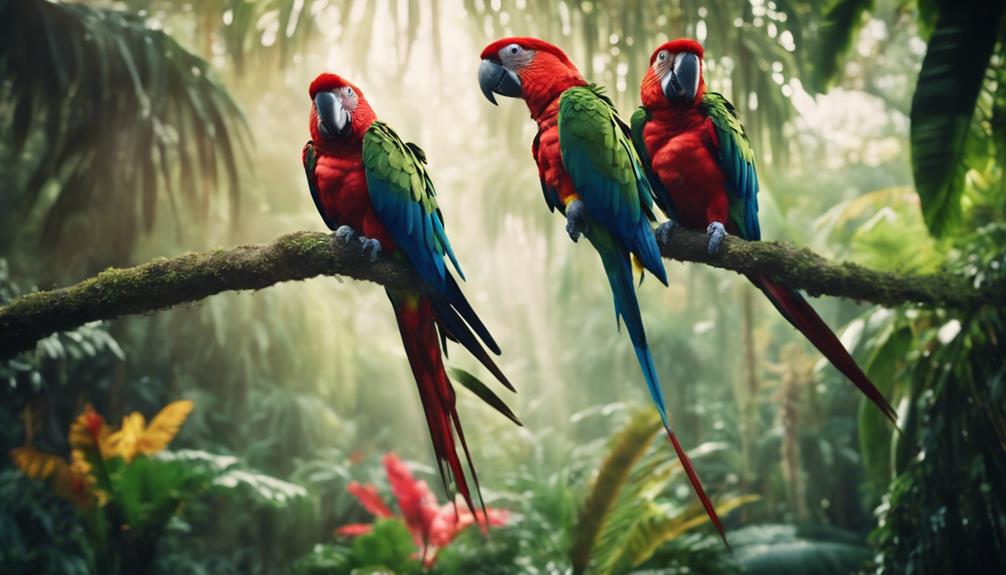
Conservation organizations worldwide collaborate on initiatives to safeguard the natural habitats of parrots. These efforts are crucial for the well-being of parrot species and the ecosystems they inhabit. By raising awareness and actively participating in conservation programs, individuals can contribute to the preservation of these magnificent birds.
Here are four key ways to get involved in parrot conservation:
- Support Wildlife Conservation: Donate to organizations dedicated to protecting parrot habitats and species.
- Educate Others: Spread knowledge about the importance of parrot conservation and how everyone can make a difference.
- Advocate for Habitat Preservation: Encourage sustainable practices that help maintain the natural environments where parrots thrive.
- Engage in Sustainable Practices: Reduce your carbon footprint, choose sustainable products, and support eco-friendly initiatives to help protect parrot habitats.
Frequently Asked Questions
Can Parrots Adapt Easily to New Environments if They Have Been Raised in Captivity for a Long Time?
Parrots raised in captivity for long periods can face behavioral challenges when adapting to new environments. Environmental enrichment and proper socialization can help improve their adaptation abilities and enhance their socialization skills in unfamiliar settings.
How Does a Parrot's Native Habitat Affect Its Social Interactions With Other Birds?
In the wild, a parrot's native habitat shapes its social interactions with other birds through complex behavioral adaptations and communication patterns. Environmental influences play a vital role in establishing social dynamics among these intelligent creatures.
Are There Specific Plants or Materials From a Parrot's Native Habitat That Can Be Incorporated Into Their Living Space for Enrichment?
Incorporating natural foraging elements like branches, leaves, and seeds from a parrot's native habitat into their living space can enhance their cognitive and physical well-being. Climbing perches, nesting materials, and bathing opportunities are crucial for enrichment.
Do Parrots From Different Regions Have Distinct Vocalizations Based on Their Native Habitat?
Parrots from different regions exhibit vocalization variations influenced by their native habitats. Behavioral adaptations, such as vocal mimicry, are shaped by environmental factors. Understanding these distinctions can enhance care plans to support a parrot's natural communication needs and behaviors.
Are There Any Specific Diseases or Parasites That Are More Common in Parrots From Certain Native Habitats Compared to Others?
When considering disease prevalence and parasite risks in parrots from various habitats, it is crucial to understand how their immune systems and adaptation capabilities differ. These factors can impact their susceptibility to certain health issues.




